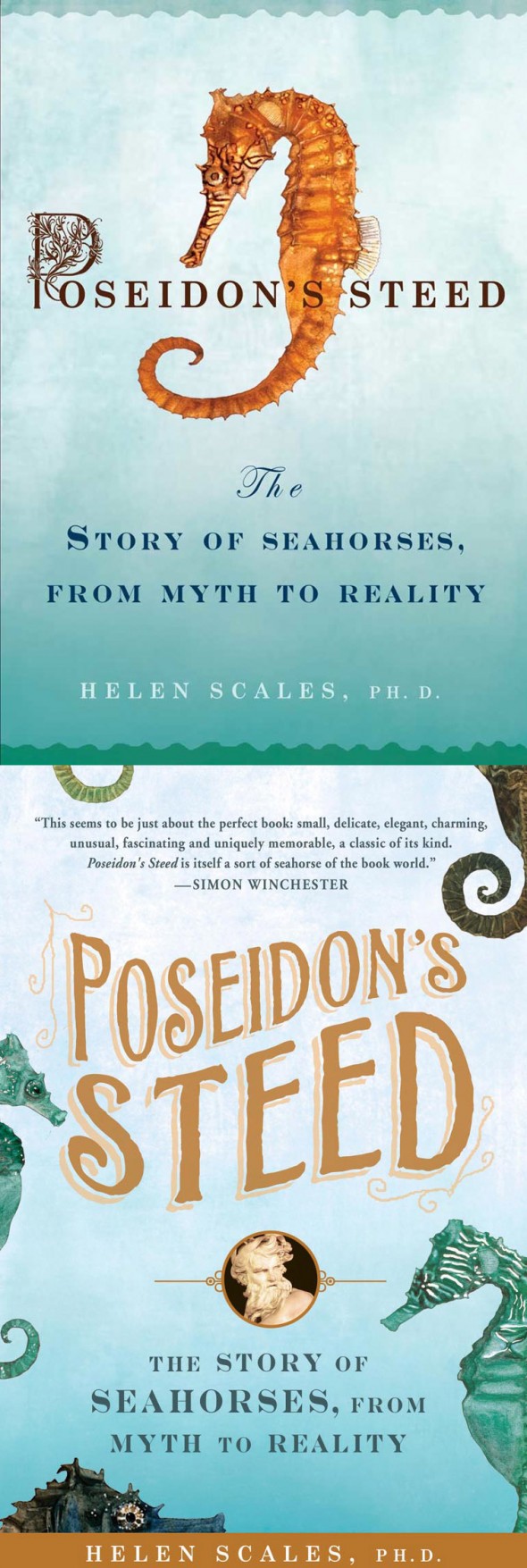If you’re looking for a last-minute Christmas gift then how about some seahorses, in the shape of our very own Helen Scales’ book, Poseidon’s Steed (out now in paperback, kindle, & you might still find a copy in hardback out there too).
Here’s a recent review of Poseidon’s Steed from Clare at Learn to Dive Today:
Poseidon’s Steed is marine biologist Helen Scales’ first book; its subject is the seahorse. The book is short – I read it in less than half a day whilst convalescing with a cold – but packed with everything that is interesting about seahorses.
I am well acquainted with the pull that these (mostly) tiny creatures exercise on people – Tony has been obsessed with seeing a seahorse for years, and I was delighted to share in his first sighting during a dive in the Knysna lagoon just after we met. The Knysna (or Cape) seahorse,Hippocampus capensis, features towards the end of Scales’ book, where she discusses the threats to its habitat and its extremely limited geographical range.
The first section of the book situates seahorses in culture, myth and history, and reveals that they have been venerated and depicted in art and design for thousands of years. Scales hops – seemingly – from topic to topic with great ease, and before you realise it she’s painted a complete picture of the seahorse and its role in human life for generations.
Scales describes seahorse biology, clearing up for me the reason why we saw such colour variation among the seahorses we spotted in Knysna: they are able to change their body colour at will. This makes it tricky to differentiate species, but extensive research has placed the current known number of seahorse species at about 40. Unique among animals, the male seahorse actually experiences pregnancy, and these creatures exhibit great fidelity to their mates. Pipefish, those close relatives of the seahorse, are also covered.
Seahorses are popular exhibits in aquaria – including tanks maintained by private individuals – and Scales traces the history of the aquarium from its origin in Victorian times, when it satisfied the prevailing mania for collecting and categorising. Husbandry of seahorses for aquaria is big business, and Scales mentions a company called Ocean Rider as an example of seahorse breeders. This takes the pressure off populations of wild seahorses, which are particularly vulnerable to human exploitation and pollution because they exhibit such habitat fidelity.
Leave a Reply